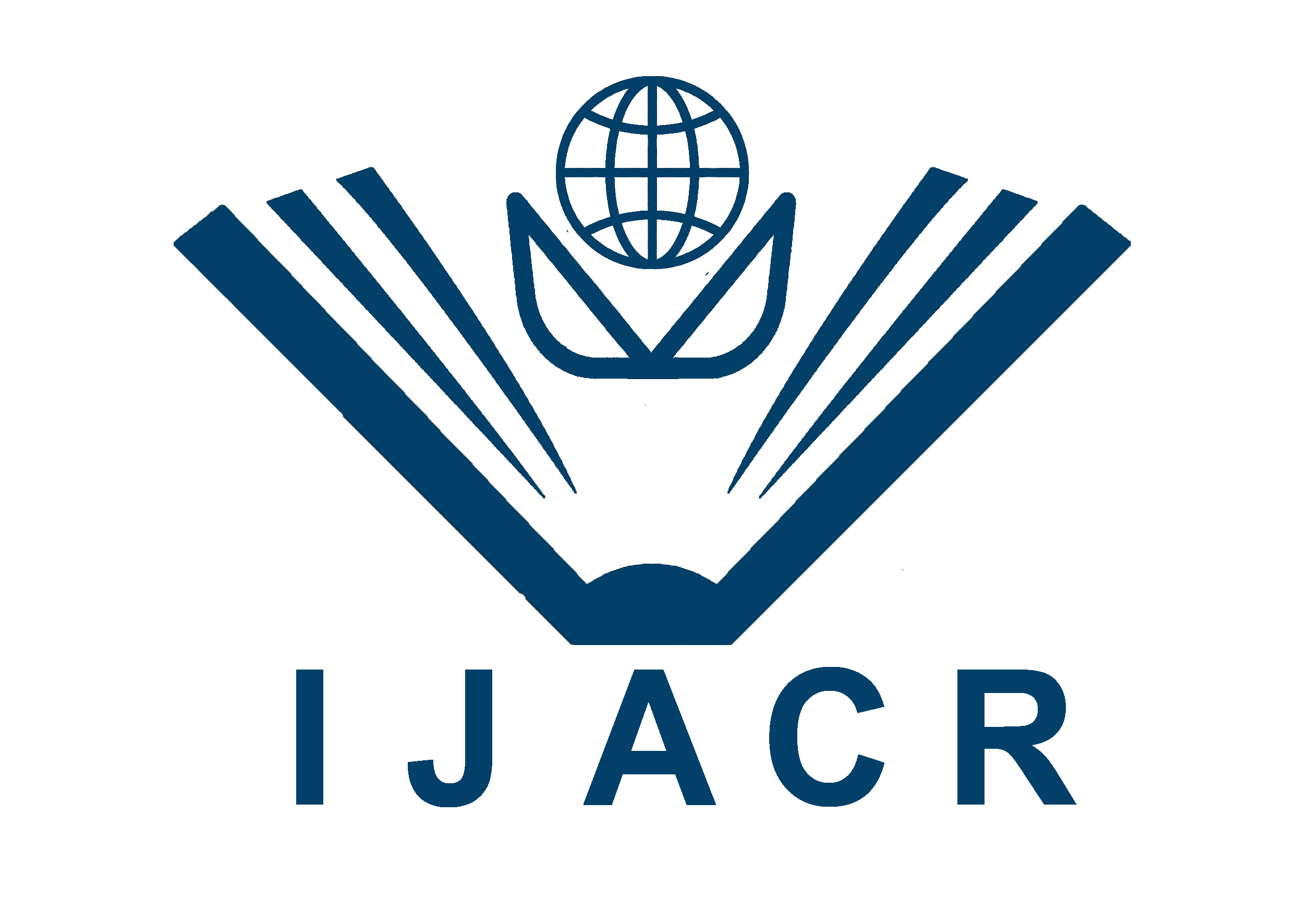International Journal for Asian Contemporary Research, 4(2): 43-47
Efficacy of Insecticides in Decreasing the Population of Aphids (Aphis fabae) and Pod Borer (Maruca vitrata) in Country Bean
Received: 17 June, 2024 || Accepted: 30 June, 2024 || Published: 01July, 2024
A B S T R A C T
Country bean, Lablab purpureus Linn, is one of the most significant legume crops, although its growth and production are declining due to pest infestations, particularly from aphids and pod borers. This experiment aimed to determine the efficacy of three insecticides, viz. Confidor 70WG (Imidacloprid) @ 0.2 ml/L, Bio-neem Plus (Azadirachtin) @ 5 ml/L and BotaniGard® 22WP (Beauveria bassiana) @ 2 ml/L against bean aphid, Aphis fabae Scopoli and Pod borer, Maruca vitrata Fabricius. Four sprays were applied, and cumulative means were calculated. Data on aphids per plant, pod borers per flower, and pod were collected at 1, 3, and 7 days after spraying (DAS). Imidacloprid showed the highest reduction in the aphid population (84.77%), followed by Azadirachtin (70.96%) and B. bassiana (61.38%). Imidacloprid also reduced pod borers on flowers by 73.92%, while botanical and microbial insecticides showed slower effects with reductions of 37.69% and 33.85%, respectively. Imidacloprid was most effective in reducing pod borers on pods (66.38%). All treatments performed better than the control in lowering populations of aphids and pod borers. Imidacloprid produced the greatest increase compared to the control group, yielding 6.523 t/ha. Azadirachtin followed closely with a yield of 5.92 t/ha, and B. bassiana yielded 5.08 t/ha. Hence, Imidacloprid is suggested as an effective solution for controlling aphids and pod borers in bean cultivation in Bangladesh.
Key Words: Bean aphids, efficacy, insecticides, and pod borer.
Copyright information: Copyright © 2024 Author(s) retain the copyright of this article. This work is licensed under a Creative Commons Attribution 4.0 International License
To cite this article: Sultana, T., Alam, M.J., Howlader, M.T.H., Sayeed, M.A., and Mosharaf, M. (2024). Efficacy of Insecticides in Decreasing the Population of Aphids (Aphis fabae) and Pod Borer (Maruca vitrata) in Country Bean. International Journal for Asian Contemporary Research, 4 (2): 43-47.
References
- Alam, M. Z., Rouf, F. M. A., Rahman, A. K., & Cork, A. (2005). Determination of the status of different borer pest complex of country bean. Annual Report, Entomology Division, Bangladesh Agricultural Research Institute (BARI), Gazipur, 32-37.
- Allen, D. J. (1996). Pests, diseases, and nutritional disorders of the common bean in Africa: A field guide (No. 260). CIAT.
- Amin, M., Azad, H., Hossain, S., & Tithi, D. (2013). Pest, predator and pollinator abundance in the cotton field of Bangladesh: A climate change country. Climate change and environment, 100-106.
- Anonymous, (2006). Bangladesh crop protection association's sales record (BCPA).
- Cermeli, M., Montagne, A., Castro, R., & Romero, R. (2002). Chemical control of Thrips palmi Karny (Thysanoptera, Thripidae) on field beans (Phaseolus vulgaris L.). Revista de la Facultad de Agronomía, 19(1), 1-8.
- Chacko, M. (2011). Aphids: Their Biology, Natural Enemies and Control Edited by A. K. Minks and P. Harrewijin. pp. 312. In World Crop Pests, vol. 2C. Series Editor-in-Chief W. Helle. xvi + 312 pp. Amsterdam: Elsevier, 1989. Hard cover ISBN 0-444-42799-6. International Journal of Tropical Insect Science. 12. 493-495. https://doi.org/10.1017/S1742758400011413
- Douro Kpindou, O., Djegui, D., Glitho, I.A. & Tamo, M. (2012). Sensitivity of Helicoverpa armigera (Hubner) (Lepidoptera: Noctuidea) to the Entomopathogenic fungi, Metarhizium anisopliae and Beauveria bassiana in laboratory. ARPN Journal of Agricultural and Biological Science, 7(12), 1007-1015.
- Gandhi, I., Gunasekaran, P.K. andTongmin, S.A. (2006). Neem oil as a potential seed dresser for managing Homopterous sucking pests of Okra (Abelmoschus esculentus (L.) (Moench). Journal of Pest Science, 79(2), 103–111. https://doi.org/10.1007/s10340-006-0122-0
- Gopalan, C., Ramasastri, B. V., & Subramanian, S. C. (2007). Nutritive Value of Indian Food. National Inst. Nutrition (ICMR) Press, Hyderabad.
- Hossain, Q.T. 1990. Status and management of vegetable pests in Bangladesh. p. 28.
- Jakhar, S., Sharma, A.K., & Choudhary, P.K. (2018). Efficacy of insecticides against sucking pests of Indian bean, Lablab purpureus (Linn.). Journal of entomology and zoology studies, 6, 2203–2207.
- Kumar, S., Pal, S., Lal, G., Singh, D. K., & Umrao, R. S. (2014). Bio-efficacy of insecticides and bio-pesticides against pod borer and jassids on Cowpea, Vigna uniguiculata (L.) Walp. Annals of Plant Protection Sciences, 22(2), 264-267.
- Osman, G. E. H., El-Ghareeb, D., Already, R., Assaeedi, A. S. A., Organji, S. R., Abulreesh, H. H., & Althubiani, A. S. (2015). Bio-insecticide Bacillus thuringiensis a comprehensive review. Egyptian Journal of Biological Pest Control, 25(1).
- Ramasubramanian, G. V., & Babu, P. S. (1989). Comparative biology of the spotted pod borer, Maruca testulalis (Geyer) on three host plants. Legume Research, 12(4), 177-178.
- Rouf, F. M. A. & Sardar, M. A. (2011). Effect Of Crude Seed Extract Of Some Indigenous Plants For The Control Of Legume Pod Borer (Maruca Vitrata F.) On Country Bean. Bangladesh Journal of Agricultural Research. 36. 10.3329/bjar.v36i1.9228.
- Sultana, S., Uddin, M.M., Islam, K.S. (2020). Damage Assessment of Bean Aphid, Aphis craccivora Koch and its Biorational Management. Journal of Bangladesh Agricultural University, 18(S1): 795–804. https://doi.org/10.5455/JBAU.9740.
- UNDP and FAO (1988). Land Resources Appraisal of Bangladesh for Agricultural Report No. 2. Agro-Ecological Region of Bangladesh. United Nations Development Program in Food and Agriculture Organization, 212-221.
- Veeranna, R., Jayaramaiah, N., & Sreeramulu, K. R. (1999). Biology of cowpea pod borer, Maruca testulalis (Geyer) (Lepidoptera: Pyralidae). Legume Research, 22(1), 51-54.
- Zaman Y. (2009). Effect of different application methods of imidacloprid on abundance and management of Jassid in okra. M. Sc. (Entom.) Thesis, Sher-e-Bangla Agricultural University.
- Akpapunam, M. (1996). Hyacinth bean (Lablab purpureus (L.) Sweet). In: Nwokolo, E., Smartt, J. (eds) Food and Feed from Legumes and Oilseeds. Springer, Boston, MA. https://doi.org/10.1007/978-1-4613-0433-3_9
Article View: 2924 times



